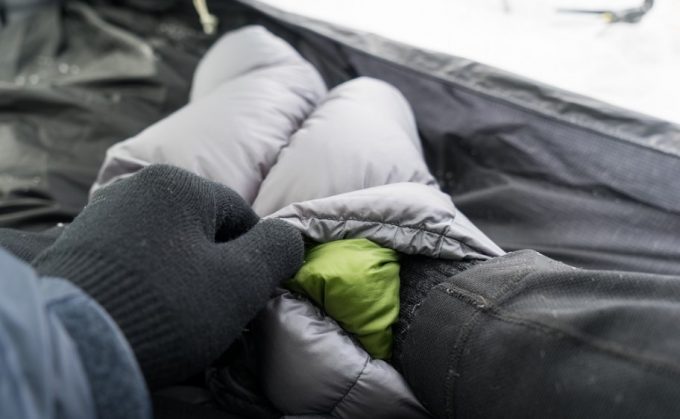Edible Snails: How to Find, Prepare and Eat Them
The foods that you bring for your hiking or camping trip can be plentiful but you need options that are beneficial and will provide you with energy. Snails are among the best foods that you can bring during your camping trip. You can find them while on the trail and add them to the foods you already have.
Edible snails make for some of the best things you could have on the trail. Snails can be ideal for your food consumption needs while out in the wild. When eating snails, you will get their strong shells removed and then prepare them to be eaten.
While many of these snails are easy to find at many stores, you can also find them in the wild. You could potentially farm them to produce more snails if you are interested in doing so. It’s not as hard for you to breed them either.
About Snails For Consumption
Snails are very commonplace around much of the world. But the ones that are edible do not have any poisonous components and can be heated up and cooked for consumption just like any other kind of meat.

Such snails are typically found along plant materials. Some snails may also be found in bodies of water. They tend to thrive in shallow spots for the most part. They especially enjoy consuming various forms of vegetation, particularly ones that have rotted out.
Most of these snails are small in size. These snails are typically measured by their shells. Some shells can be 6 cm in diameter while others can get to be 30 cm.
Interestingly enough, snails are prepared for use in meals in many parts of the world. This is especially the case in France where snails are prepared as escargot. Of course, people in France typically use butter when preparing those snails but this is not necessary.
What Makes Them Good For Eating?
The idea of eating snails might not seem all that appealing to most. However, it can actually make a real difference for your camping and survival needs if done well enough. There are many reasons why snails are great to have. If anything, they can give you the energy you need while out on the camping trail or hiking path. For the top wilderness survival skills you must have to make it in the wilds, see our earlier article on this topic.

- Snails are light in calories. About 100 grams or 3.5 ounces of snails contain about 90 calories.
- Most of the calories from snails come from protein. Specifically, about 100 grams of snails contain 16 grams of protein. This provides you with enough energy for your camping or hiking trips throughout the day.
- Snails contain about 2 grams of carbohydrates per serving. This ensures that you can use the protein for energy without feeling fatigue from having too many carbs.
- You won’t have to worry about consuming too much fat in snails. A serving contains 1.5 grams of fat on average. There is also a little more unsaturated fat than there is saturated.
- There is only around 50 grams of cholesterol in a 100 gram serving.
- About 3.5 mg of iron is included in a serving. This is a better total than what you’d get from beef.
How to Identify Snails For Consumption
It is estimated that there are more than 110 different species of snails around the world. Some of the more common types of snails you will find include these:
- The common garden snail, or the Helix aspersa, is generally distinguished as having a brownish skin tone with a shell featuring a spiral effect. The horizontal lines on its shell typically go from one side of the shell to the next. This can be found around Western and Southern parts of the United States.
- The Cepaea has a solid spiral appearance on its shell. The lines move along with the length of the spiral. The lines are dark while the rest of the shell is light. This can be found from the Southeastern United States all the way up to the Canadian Maritimes.
- The Abalone is a common sea snail found mostly in bodies of water. This snail has a shell that covers a majority of its body. You are more likely to find this around larger bodies of water, particularly around oceans.
- Whelks can be found on coastlines. These snails have longer shells that often have points on them. The Busycon whelk, for instance, has a cream-colored shell that can grow to be 40 cm long.
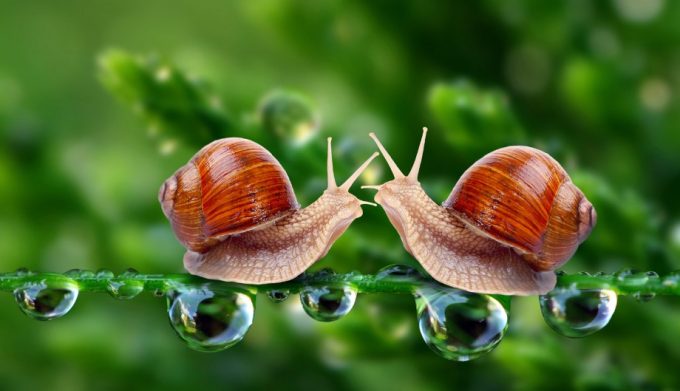
If you notice any appealing shell in the wild, the odds are you will have found a snail. A good number of snails are certainly easy to find but you must be cautious when identifying them. You should also look inside the opening of a shell to see if there is actually a snail in there.
Avoid the Cone Snail
While many snails are edible, you have to be cautious when looking around. You must avoid the cone snail as it is harmful and potentially deadly.

A cone snail has a very bright shell and has four appendages sticking out of the front part of the shell. Its shell is noticeable for having a cone shape to it. The snail has venom that can kill many predators and can be especially dangerous to people if too much of it is consumed.
Where Can You Find Snails?
To get started with the right snails, you will have to look carefully to see where you can find them. Here are a few of the more commonplace spots that you can find them at:
- They are often found around plants and other leafy bodies. They can attach themselves to such light surfaces quite well.
- They may also be seen in shallow bodies of water. These include areas around streams. You might have an easier time finding them along the coastlines, though.
- If you are unable to find snails in the wild then you can always find them at stores. Many camping and outdoorsman preparation stores sell live snails although not everyone will do so.
- There are many online options for you to search for as well. Still, these places might charge more money due to the costs associated with keeping them alive and shipping them out to you. There’s also the risk of such snails dying while in transit.

As you look around while in the wild or even in your backyard, you will have to check and see what’s around your local areas. You will then have to start luring those snails out to where you are.
How To Lure Snails
You can always lure snails to come to you if you aren’t keen on spending money to get them. There are many points to use when luring them over. These can be used whether you are either at your home looking for snails or if you’re out in the wild. If anything, you should prepare a few of the materials needed for luring them in your backpack before you head out on the trail:
- First, schedule the right times for finding snails. Snails are nocturnal and are therefore easier to spot in the earning morning or during sunset. You can also look for them after a light rainfall as they will typically come out from hiding after it is done raining.
- Place some bran near an overturned flower pot. Snails are often lured by bran. As they consume the bran, they will get onto the pot and attach themselves to it. You can then gather the snails you find at this point.
- You can also add small strips of copper onto any trees around your property or any other spot. Copper strips can be easily found at a variety of home improvement stores. Such strips especially work on fruit-bearing trees. The snails are not going to crawl over the bands but they will be lured by the reflections generated by the copper.
No matter what you do, you must avoid using any products marketed as snail bait. Baits are often poisonous and can kill off snails rather quickly. What’s worse is that the toxins from baits might not go away altogether, thus making the snails dangerous to consume.
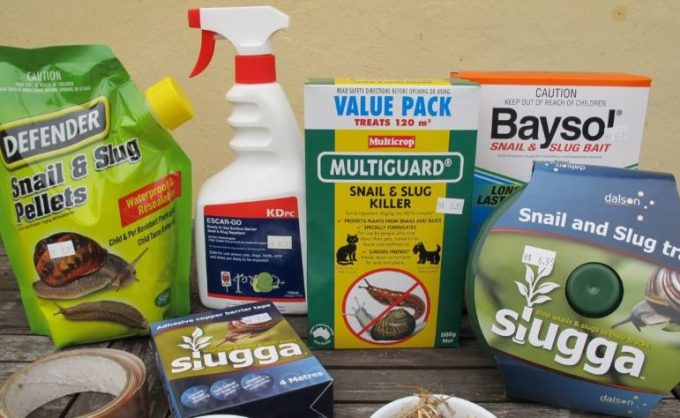
This comes as the snail’s intestines will have been disabled, thus keeping the organ from removing potentially harmful toxins added by the bait.
Also, do use any of these practices in spots where toxins have been sprayed or used at. Toxins from pesticides and other compounds will stick around in the bodies of your snails for a while.
How To Prepare a Snail
After you have gotten your snails, you can prepare as many of them as you want. You must watch for what you’re going to do when preparing them though.
It is typically best to prepare your snails right before you are going to eat them. This means you will need the necessary cooking materials on hand when camping. These include a portable stove and enough fuel to power it.

A quick note: Feed any snails you plan on consuming a water-only diet for a few days before you cook them. Water helps the snails discharge any remaining bits of slime in their bodies. Also, you can serve them plain lettuce for a few days before then so they can purge out any toxins they have left.
- Make sure the snails you want to cook have retracted into their shells before preparing them. Fortunately, they will withdraw into them when they feel pressure from you handling them or when they feel the water.
- Boil at least two gallons of water. Get the water to a rolling boil.
- Boil the snails for about three minutes.
- Take the snails out of the water and drain them.
- Rinse the snails off in cold water for a few minutes. Make sure the water you use is fully clean and purified. If you have to boil water, make sure it has cooled off before you add the snails.
- Remove the snails from their shells. You can use any sharp object to get them out although a two-pronged fork works best. To get the snail out, hold the shell in one hand and then poke the meaty part with the fork. Twist the shell in one direction and then your fork in the opposite path. The snail might have been overcooked if you struggle to actually get it removed.
- Wash the snails you remove in two gallons of water with one cup of vinegar. Do this at least three times to get rid of any mucus left on their bodies.
- Drain the snails after washing them off.
- You can cook them in water for about 30 minutes before consuming them. This is to make the snails a little firmer. The bacteria and other compounds from the snail should have been killed off during the boiling process but this last step could at least clear out any remaining traces.
How To Breed Your Snails
One of the best things you can do with snails is breeding them. You will have an easier time with getting more of these snails if you breed them properly. A great part of breeding snails is that you don’t have to worry about getting specific snails to mate with each other. Snails are naturally hermaphroditic and therefore can breed with any other snail.

But to make this work, you must have a proper habitat for breeding. Here are some steps to use in order to breed snails:
- Prepare an appropriate habitat for the snails. The habitat can be a traditional aquarium or another secured body. The key is to have a space that is open for plenty of movement but still secured so snails will not escape. It needs plenty of airflow as well.
- Gather enough soil for the habitat to where it is 2 inches deep or greater. Add some water to the soil so it will be soft. Be sure to add some foliage to the habitat so it will feel comfortable.
- Add enough holes and openings around the habitat so the snails will get enough air. Make sure the openings aren’t big enough to where the snails could get out of the habitat.
- Avoid placing the snails in a bright environment or else they will hide all day.
- Provide the snails with vegetables, fruits and grains. They are vegetarians and will consume all kinds of plant-based materials. They especially thrive off of rotting plant matter.
- Add plenty of water into the habitat.
- After you get the environment to feel comfortable and enjoyable, you must wait for the snails to mate. The snails will be more likely to mate when they are in a positive environment like the habitat you have prepared.
Remember that you cannot force the snails to mate. You have to prepare a great environment for them to do that.
See also: Prepare Your Own Food: 8 Ways to Eat Acorn
It will take time for the snails to actually start mating. They could start mating in a week or less after you set up the habitat. Snails will lay their eggs after they are comfortable. It can take as little as 24 hours for eggs to hatch although the timing varies based on the snails you get.
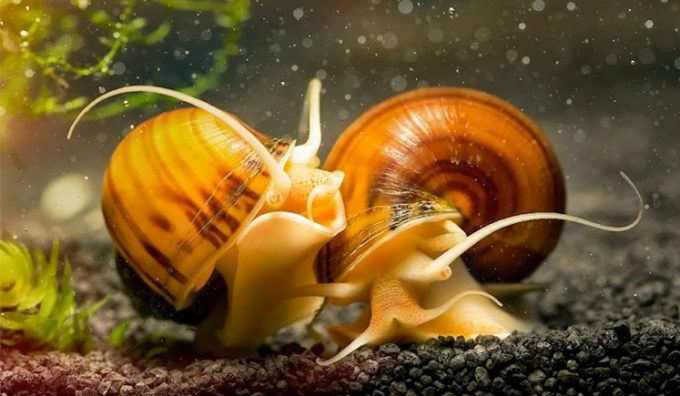
This practice should provide you with an infinite number of snails depending on how well you handle the process. Be sure to take good care of your habitat so you’ll get more out of these snails.
Key Safety Points
There are a few important safety considerations to watch for when preparing and consuming snails:
- If you find a snail in the wild, you might want to wait about three to four days before actually consuming it. There’s a chance the snail has consumed various dangerous pesticides and other compounds outside your home. After a few days, all traces of whatever the snail has consumed should be removed naturally. The intestines in a snail should have removed the toxins from its body after a few days without them.
- You must fully cook any snail that you come across in order to kill off any potentially dangerous bacteria it might hold.
- Avoid consuming the snails with their shells. In addition to being choking hazards, some shells might be hard to clean off. This is especially the case for ones with lots of pores and cracks.
- While you can add salt or other spices onto your snails after you are done cooking them, you should avoid doing so before you cook those snails. Anything you add onto the snails before you cook them could weaken them and cause their bodies to break down.
Conclusion
When you are out in the wild, snails can make for great things to consume. These will help you feel energetic and will do well for your nutritional needs while far from civilization.
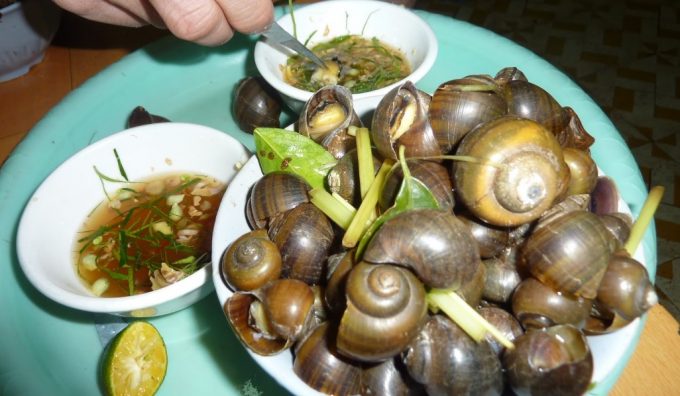
Remember that you can always find these snails with ease in any place in the environment. But if you really want to benefit from snails, you should aim to get them ready before you head out in the wild. It’s not too hard to pull that off.
Don’t think of consuming snails as something disgusting or unappealing. This can be perfect for when you’re out in the wild. Make sure you watch for how you prepare them so you will have great snails to consume without being at risk of harm.
You can read the top tips on how to survive in the wilderness to get you prepared for your next adventure.



